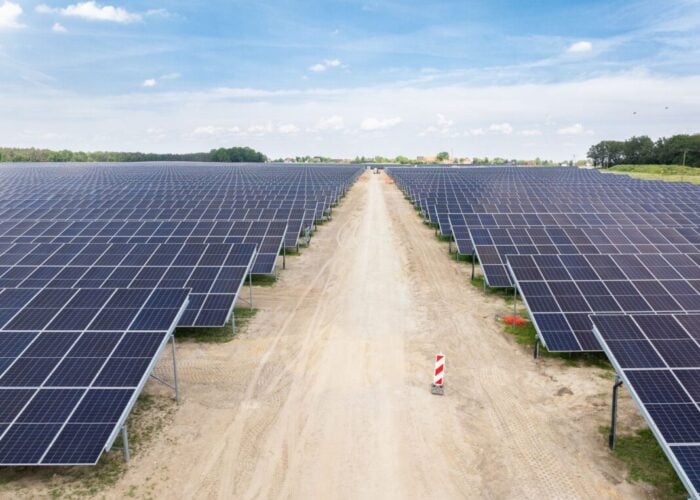Jun Xu and his team of researchers at the Oak Ridge National Laboratory have created a 3-D nanocone-based solar cell, which is said to enhance the light-to-power conversion efficiency by almost 80%. The solar cell is constructed using n-type nanocones made from zinc oxide, which perform as the junction framework and electron conductor , and are enveloped by a p-type semiconductor consisting of polycrystalline cadmium telluride, which act as the principal photon absorber channel and hole conductor.
“To solve the entrapment problems that reduce solar cell efficiency, we created a nanocone-based solar cell, invented methods to synthesize these cells and demonstrated improved charge collection efficiency,” said Xu, a member of ORNL's chemical sciences division.
Unlock unlimited access for 12 whole months of distinctive global analysis
Photovoltaics International is now included.
- Regular insight and analysis of the industry’s biggest developments
- In-depth interviews with the industry’s leading figures
- Unlimited digital access to the PV Tech Power journal catalogue
- Unlimited digital access to the Photovoltaics International journal catalogue
- Access to more than 1,000 technical papers
- Discounts on Solar Media’s portfolio of events, in-person and virtual
Using this technology, Xu and his team are said to have reached a light-to-power conversion efficiency of 3.2%, compared to the 1.8% efficiency of the traditional planar structure from the same materials. The researchers point to the solar materials distinctive electric field distribution, which allows for an efficient charge transport, the combination of nanocones using economical proprietary methods and the reduction of defect and voids in semiconductors as important features of the technology that allow for the enhanced conversion rate. Interestingly, the team maintains that due to the efficient charge transport, the new solar cell is said to be able to endure defective materials and therefore lessen the cost of producing next-generation solar cells.
“We designed the three-dimensional structure to provide an intrinsic electric field distribution that promotes efficient charge transport and high efficiency in converting energy from sunlight into electricity,” Xu said. “The important concept behind our invention is that the nanocone shape generates a high electric field in the vicinity of the tip junction, effectively separating, injecting and collecting minority carriers, resulting in a higher efficiency than that of a conventional planar cell made with the same materials,” Xu said.
The research papers conducted for the 3-D nanocone technology, “Efficient Charge Transport in Nanocone Tip-Film Solar Cells” and “Nanojunction solar cells based on polycrystalline CdTe films grown on ZnO nanocones”, were accepted by the Institute of Electrical and Electronics Engineers (IEEE) PV specialist conference and are set to be published in the IEEE Proceedings.







